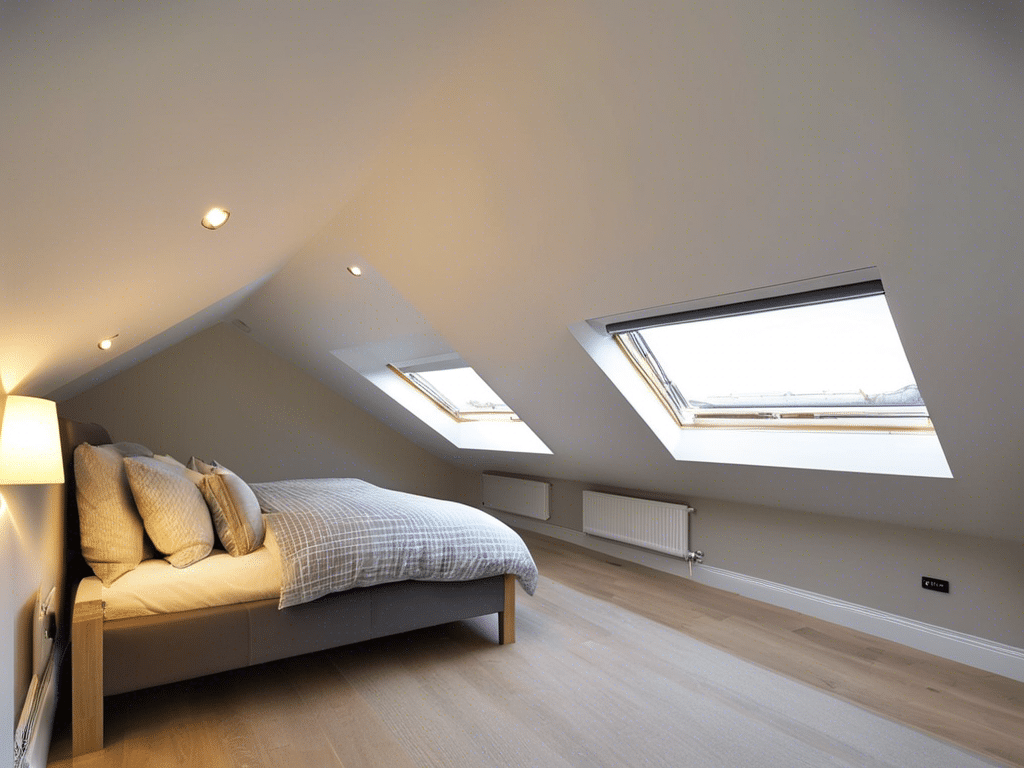Understanding A Hip To Gable Loft Conversion

Table of Contents
Enhancing the practicality and value of your home is a common goal for many of us homeowners. One increasingly popular method to achieve this is through a hip to gable loft conversion.
So let’s look at the concept of hip to gable conversions, explaining what they are, their benefits, planning permissions required, and much more.
Understanding Loft Conversions
Before we delve into the specifics of hip to gable conversions, let’s first understand the concept of loft conversions. Essentially, a loft conversion is a process of transforming an attic or loft space into a functional room.
This could be anything from an additional bedroom, home office, playroom, or even a gym.
What is a Hip to Gable Loft Conversion?
A hip to gable loft conversion is a popular option for homeowners with semi-detached, end of terrace, and detached homes. This process essentially involves changing a hip-end roof into a gable-end roof, thereby increasing the usable space within the loft.
Hip Roofs Vs Gable Roofs
A hip roof features four slopes that converge at a central point at the top, creating a pyramid-like structure. On the other hand, a gable roof has two sloping sides that meet at the top, forming a triangular roof.
A hip to gable conversion involves extending the sloping side of a hip roof upwards to create a vertical wall, also known as a gable. This significantly augments the floor space and headroom within the loft, making it an ideal solution for homeowners looking to optimise their living space.
Pros and Cons of Hip to Gable Loft Conversion
Like any home improvement project, a hip to gable loft conversion comes with its own set of advantages and disadvantages.
Pros:
- Increased Space: The primary benefit of a hip to gable conversion is the significant increase in usable loft space. This additional room can serve various purposes, from a new bedroom to a home office.
- Aesthetics: A well-executed hip to gable conversion blends seamlessly with the existing architecture, enhancing the overall aesthetics of the property.
- Permitted Development: In most cases, hip to gable conversions fall within the permitted development rights, eliminating the need for traditional planning permission.
Cons:
- Suitability: This type of conversion is not suitable for mid-terrace homes, which lack hip ends.
- Roofscape Balance: The visual balance of the roofscape can be disrupted if a neighbouring property does not also have a hip to gable conversion.
- Limited Space Increase: Without an additional dormer extension, the increase in space from a hip to gable conversion can be minimal.
Do You Need Planning Permission?
Typically, hip to gable conversions fall within the permitted development rights, meaning there’s no need for traditional planning permission. See more about loft planning permision here
However, it’s prudent to apply for a lawful development certificate to confirm the legality of your build. It’s also crucial to ensure that your conversion adheres to the rules of the scheme.
However, remember that properties such as flats, maisonettes, and those in conservation areas may not qualify for permitted development rights.
Design Rules for Loft Conversion
Here are some key design rules for loft conversions:
- The additional roof space should not exceed 50 cubic metres for detached and semi-detached houses.
- Similar materials to the existing house should be used.
- No windows should be included in any wall or roof slope forming a side elevation.
- The pitch of the roof must match that of the existing house.
- The dormer wall should be set back at least 20 cm from the existing wall face.
- Windows should be non-opening if less than 1.7m from the floor level and side windows should be obscured/frosted.
Alternative Loft Conversion Options
If a hip to gable conversion isn’t suitable for your property, there are other types of loft conversions you can consider. These include side dormers, rear dormers, L-shaped dormers, mansard conversions, and room-in-loft conversions.
Each of these options has its own set of benefits and drawbacks, and what works best for you will depend on the specifics of your property and your individual needs.
Hip to Gable Loft Conversion Cost
The cost of a hip to gable loft conversion can vary significantly based on factors like the size of the project, your location, and the complexity of the work involved. However, you can generally expect to pay around £40,000 to £50,000.
While this might seem like a substantial investment, it’s important to remember that a well-executed conversion can significantly increase the value of your property, making it a worthwhile endeavour.
How Long Does a Hip to Gable Loft Conversion Take?
The duration of a hip to gable loft conversion can vary based on the complexity of the project. However, a typical loft conversion timeline usually takes between six to eight weeks. This timeline includes everything from the initial planning stages to the final construction.
A hip to gable loft conversion (one of many loft conversion formats) can be a fantastic way to maximise the usable space in your home while also potentially increasing its value. By understanding the process, benefits, and potential drawbacks, you can make an informed decision on whether this type of conversion is right for you. Always seek professional advice and ensure all necessary permissions are obtained before embarking on your loft conversion journey.
